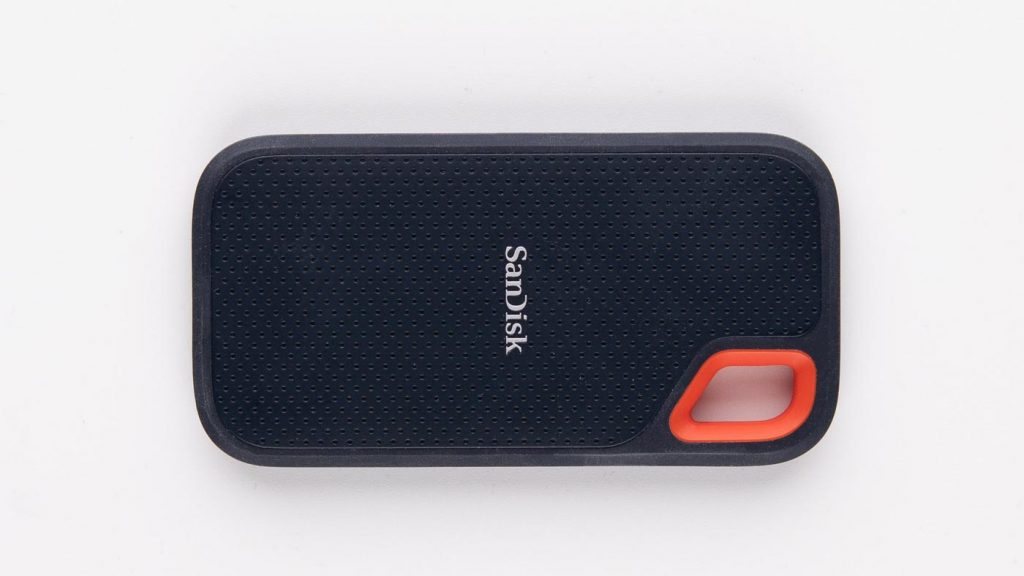Modern computing relies heavily on Solid State Drives due to their faster speeds and improved reliability, surpassing traditional Hard Disk Drives. However, the popularity of SSDs has made them a target for counterfeiters who prey on unsuspecting buyers. Counterfeit SSDs provide poor performance and can put your data at risk. Identifying counterfeit SSDs is crucial to prevent being scammed. With the help of this guide, you will be able to learn how to spot fake SSDs and avoid being deceived.
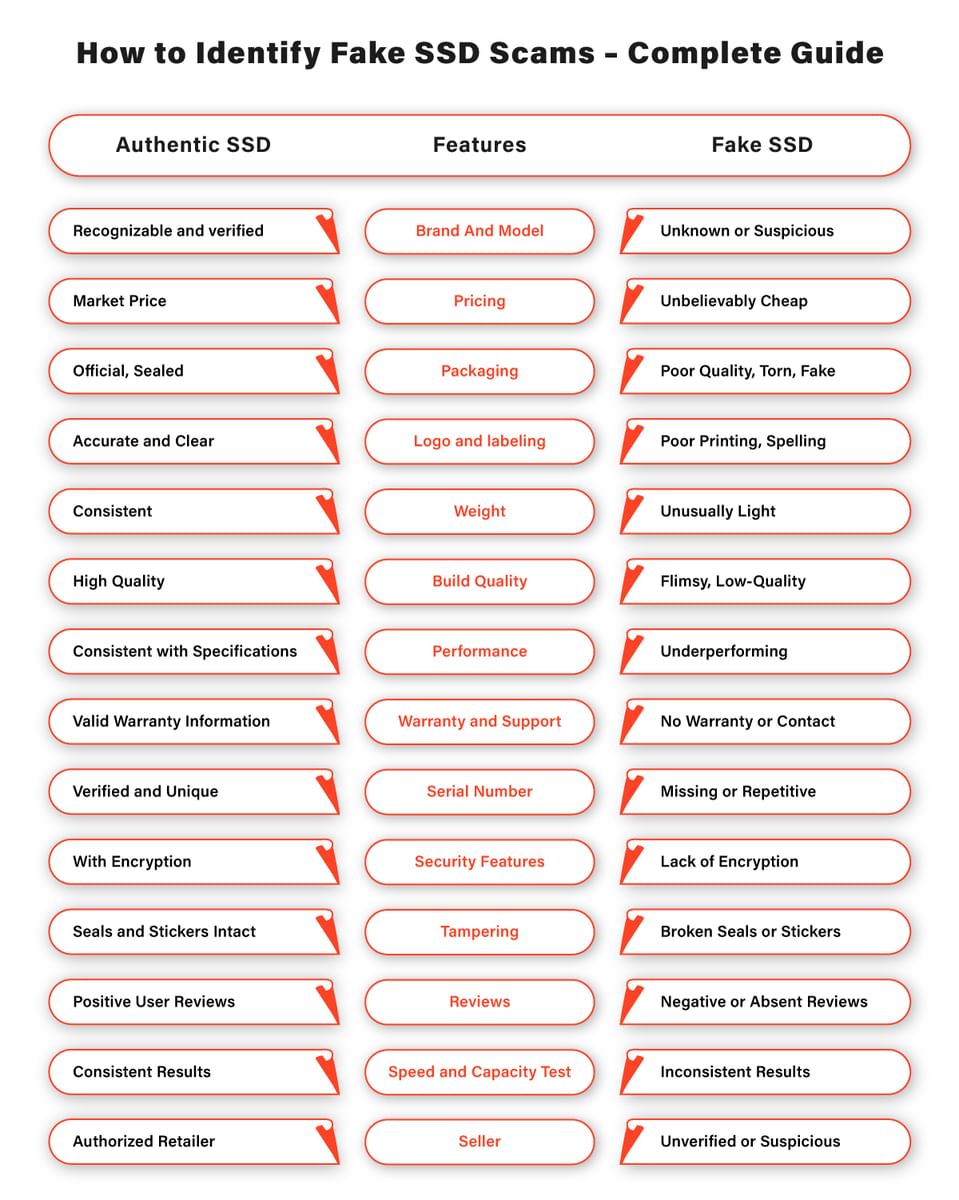
Check the Packaging
Packaging a solid-state drive (SSD) can expose critical clues about its authenticity. It can be challenging for counterfeiters to reproduce the same level of precision and quality assurance that legitimate SSD manufacturers put into their packaging. Careful examination of the packaging is the initial step towards detecting a counterfeit SSD.
Brand Authenticity
Prioritizing the examination of the SSD brand is crucial. Major companies such as Samsung, Kingston, Crucial, and Western Digital dedicate extensive efforts to designing unique packaging. Be mindful of the branding, logos, and overall design elements. Look for spelling errors, non-standard fonts, or any discrepancies in the logo’s consistency.
Holographic Stickers and Seals
Genuine SSDs frequently come with stickers or seals on their packaging with holographic elements. These security measures are difficult for counterfeiters to imitate precisely. Carefully inspect these stickers, as authentic holograms will exhibit a different appearance when viewed from various angles. Conversely, counterfeit SSDs might display stickers that are static or of inferior quality. Be alert for indications of interference, such as stickers that seem damaged, ripped, or have pockets of air trapped underneath them.
Barcodes and Serial Numbers
Authentic SSDs come with unique barcodes and serial numbers on the packaging. Genuine codes can be difficult for counterfeiters to acquire. Therefore, they may resort to utilizing duplicated or generic numbers. Make sure to cross-check the serial number on the package with the manufacturer’s official database. You can usually find the database on the company’s website. If the serial number doesn’t match or isn’t acknowledged, it’s a significant warning sign.
Package Quality
Make sure to examine the packaging’s overall quality. In contrast, counterfeit SSDs could have weak packaging, with faded colors or graphics that are low in resolution. Compare the packaging with images of authentic SSDs online to spot any distinctions.
Warranty Information
The packaging of authentic SSDs usually contains details regarding the warranty. It is advisable to thoroughly review the warranty terms and conditions and compare them with the information provided on the manufacturer’s official website. Counterfeit SSDs may provide no or limited warranty, or the terms and conditions may differ significantly from those of the original product.
Authorized Retailers
Consider the source from which you are purchasing the SSD. Buying from reputable and authorized retailers or directly from the manufacturer’s official website significantly reduces the risk of encountering counterfeit products.
User Reviews and Forums
It’s essential to conduct comprehensive online research on the particular SSD model you intend to buy before purchasing. Check user reviews, tech forum discussions, and community feedback to gather more information. If other users have come across fake versions of the SSD, they are likely to share their experiences and give more pointers for identification.
By meticulously examining the packaging of an SSD, you can take a critical first step in safeguarding yourself from counterfeit products. However, remember that counterfeiters are continually refining their techniques, so staying vigilant and informed about the latest authentication methods employed by reputable SSD manufacturers is essential.
| Aspect | What to Do |
|---|---|
| Brand Authenticity | Prioritize examination of the SSD brand. Look for spelling errors, non-standard fonts, or design inconsistencies. |
| Holographic Stickers | Check for holographic stickers or seals on packaging. Authentic ones display different appearances from various angles. Counterfeits may have static or poor-quality stickers. |
| Barcodes and Serial Numbers | Verify unique barcodes and serial numbers on packaging. Cross-check with the manufacturer's official database. Mismatched or unacknowledged numbers are a warning sign. |
| Package Quality | Examine the overall packaging quality. Counterfeit SSDs may have weak packaging with faded colors or low-resolution graphics. Compare with images of authentic SSDs online. |
| Warranty Information | Review the warranty details on the packaging. Compare with the manufacturer's official website. Counterfeit SSDs may offer no or significantly different warranties. |
| Authorized Retailers | Consider purchasing from reputable and authorized retailers or the manufacturer's official website to reduce the risk of encountering counterfeit products. |
| User Reviews and Forums | Conduct online research, check user reviews, tech forums, and community feedback for the specific SSD model. Others' experiences can provide additional identification tips. |
Examine the Physical Appearance
Inspecting the drive’s physical attributes and construction quality is imperative to identify counterfeit SSDs. There are distinctive characteristics that can aid in differentiating fraudulent SSDs from authentic ones. Such as visual cues that are often present in fake SSDs. Here are some key aspects to consider:

Inspect the SSD for any irregularities in the design.
One of the first things you should do is closely examine the SSD for any design abnormalities. Look for the following:
- Misaligned Labels: Check whether the product labels, logos, and other markings are aligned correctly. Counterfeit SSDs may have labels that are slightly off-center or crooked.
- Uneven Edges: Gently slide your fingers across the periphery of the SSD. The surface of genuine SSDs is usually smooth and uniformly polished. Inferior counterfeit items may exhibit coarse or uneven edges due to shoddy production.
Look for discrepancies in the product labels’ color, font, or placement.
Counterfeiters often struggle to replicate product labels accurately. Pay close attention to the labels on the SSD and compare them to images of genuine products from the manufacturer’s website or other reliable sources.
Scammers are improving their methods, which means using various techniques to identify fake SSDs accurately is important. Combining visual checks with other approaches, such as inspecting the packaging and confirming the serial number, can increase your ability to detect counterfeit goods.
Verify the Serial Number
Verifying the serial number is an efficient method for confirming the genuineness of an SSD. By performing this fundamental task, you can easily detect counterfeit products. Here’s what to do:
Cross-check the serial number on the SSD
Find the serial number on the SSD, generally found on a label on the drive itself. Ensure to confirm the authenticity of the product by cross-referencing the serial number with the official database of the manufacturer or by reaching out to their customer support team. Reliable manufacturers keep track of their merchandise; an authentic serial number must correspond with their records.
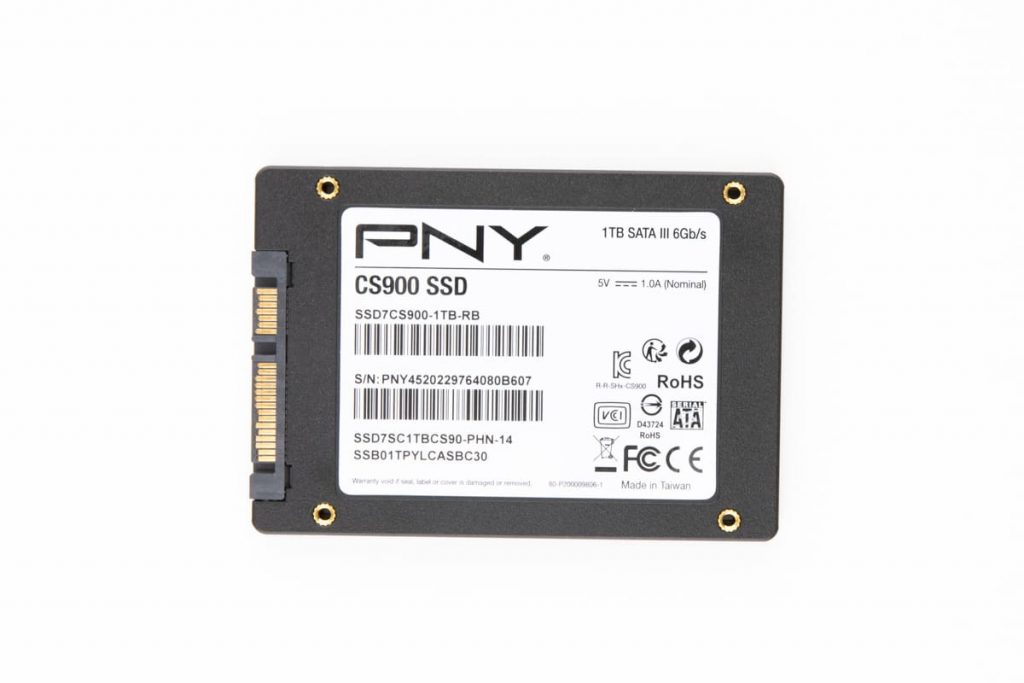
Test the Performance
Testing the performance of an SSD is a paramount step in verifying its genuineness. Counterfeit SSDs often fail to meet the performance standards of authentic products. To evaluate an SSD’s performance, follow these steps:
Use benchmarking software to assess the read and write speeds of the SSD
Benchmark Software
Employ reputable benchmarking software designed for SSD testing.
Perform Benchmark Tests
Conduct benchmark tests on the SSD to measure its read and write speeds. The software will generate results indicating the drive’s performance in megabytes per second (MB/s) or gigabytes per second (GB/s).
Compare the results with the manufacturer’s specifications
Visit the authorized website of the SSD manufacturer and look for the specifications of the specific model you are testing. Genuine manufacturers provide detailed performance specifications for each SSD they produce.
Be wary if the performance falls significantly below the expected levels.
Exercise caution if the benchmark results indicate that the SSD’s performance falls significantly below the manufacturer’s specified speeds. If you have purchased a counterfeit SSD, you may experience difficulty achieving the performance. In such situations, returning the product or requesting a refund may be advisable.
Testing an SSD’s performance is crucial to detect fake products and guarantee the expected performance. Although performance may fluctuate slightly due to firmware updates and system settings, significant deviations from the manufacturer’s specifications should raise doubts about the SSD’s authenticity and quality.
Authenticate the Firmware
Verifying the firmware of an SSD is an important measure to ensure its genuineness. Fake SSDs might have either outdated or tampered with firmware, which could negatively impact their performance and dependability.
It is essential to obtain the firmware update tool from the official website to ensure that you have the correct SSD model tool to prevent compatibility problems. After the downloading, run the firmware update tool and follow the on-screen instructions to check the firmware version installed on the SSD.
Be cautious if the firmware is outdated or modified.
Imitation SSDs often come with firmware that is either outdated or modified. If the firmware version on the SSD is inconsistent with the official tool or appears outdated compared to the manufacturer’s website, it is important to exercise caution. Using outdated or modified firmware can cause performance problems and may result in data loss. In such cases, it may be advisable to contact the manufacturer’s customer support for additional guidance or to return the product if necessary.
Verifying the genuineness of the firmware is of utmost importance in guaranteeing that your SSD operates as planned and is not vulnerable to any illicit modifications. Firmware updates are frequently rolled out by manufacturers to improve performance, stability, and security, making it imperative to keep current.
Check SSD Real Capacity
Verifying the actual storage capacity of a drive is crucial when detecting counterfeit SSDs. These fake SSDs frequently overstate their storage capacity, promising more storage than they can genuinely provide. The following instructions will guarantee you receive the storage capacity you have paid for.
Use a Reliable Tool
It would be helpful to download and install a reliable tool for checking your disk capacity. By doing so, you can obtain precise details regarding the storage capacity of your SSD.
Run the Tool
Open the capacity checking tool and choose the SSD drive to check. The tool will show the real storage capacity, which should be almost identical to the capacity advertised on the product label.
Be Cautious of Significant Differences
If the capacity reported by the SSD is much lower than the capacity mentioned on its label, it may suggest that the SSD is a fake product. You may consider returning the product or requesting a refund in such circumstances.
Verifying the real storage capacity of an SSD is a simple method to ensure that you get the amount of storage you paid for and to detect fake products that claim to have more storage than they actually do.
Remember that we offer reliable data recovery services if you encounter an imitation SSD or experience data loss due to subpar storage devices. We comprehend the significance of safeguarding your data, especially in situations involving counterfeit SSDs. Our expert team is here to help you recover your valuable information when unexpected challenges arise. Don’t hesitate to reach out to us for professional data recovery assistance.
Frequently Asked Questions
Is there a fake SSD?
Yes, unfortunately, there are imitation or fake SSDs on the market. These counterfeit SSDs often imitate the appearance of well-known brands but contain lower-quality components or less storage capacity than advertised. Purchasing SSDs from reputable sources and manufacturers is important to avoid falling victim to fake SSDs.
How are SSDs so cheap?
While budget-friendly SSD options are available, some overly cheap SSDs may raise suspicions. Counterfeit or fake SSDs might be priced exceptionally low due to the use of inferior parts or misrepresenting specifications. Stick to well-established brands and read reviews from trusted sources to ensure you get an authentic SSD at a fair price.
Is it okay to buy a cheap SSD?
Acquiring an SSD that fits your budget and comes from a reliable manufacturer can significantly enhance your computer’s speed and efficiency without causing a dent in your wallet. However, exercise caution when considering SSDs that seem too good to be true regarding price. To avoid potential issues with fake SSDs, always research the brand, read product reviews, and purchase from reputable retailers.
How to check what SSD I have?
To identify your SSD model and specifications in Windows, follow these steps:
- Press Win + X and select “Device Manager.”
- Expand the “Disk drives” section to view your SSD’s name and model number.
In macOS, you can:
- Click the Apple menu and select “About This Mac.”
- In the “Overview” tab, click “System Report.”
- Under “Hardware” in the left sidebar, select “Storage” to find information about your SSD.
Related Blogs
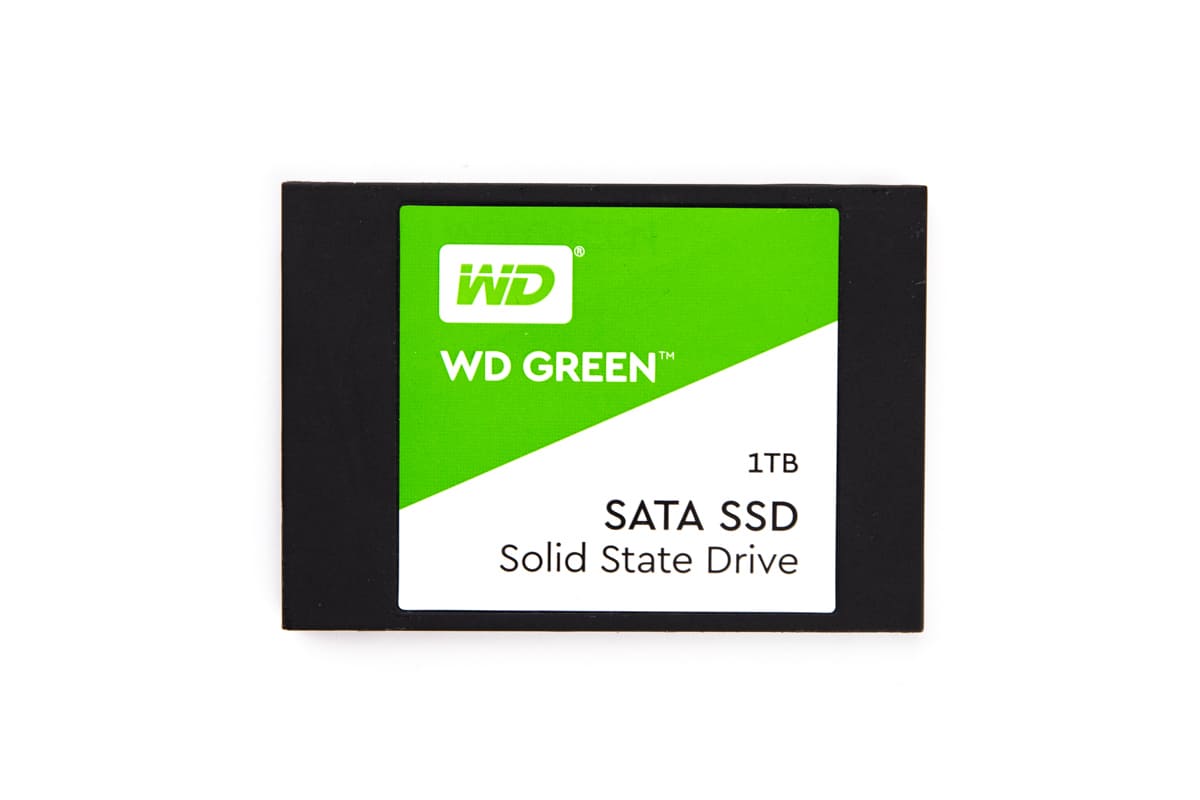
Maximizing SATA SSD Lifespan: Tips for Long-Term Durability
Discover the advantages of SATA SSDs over traditional hard drives. Experience faster data access and increased durability.
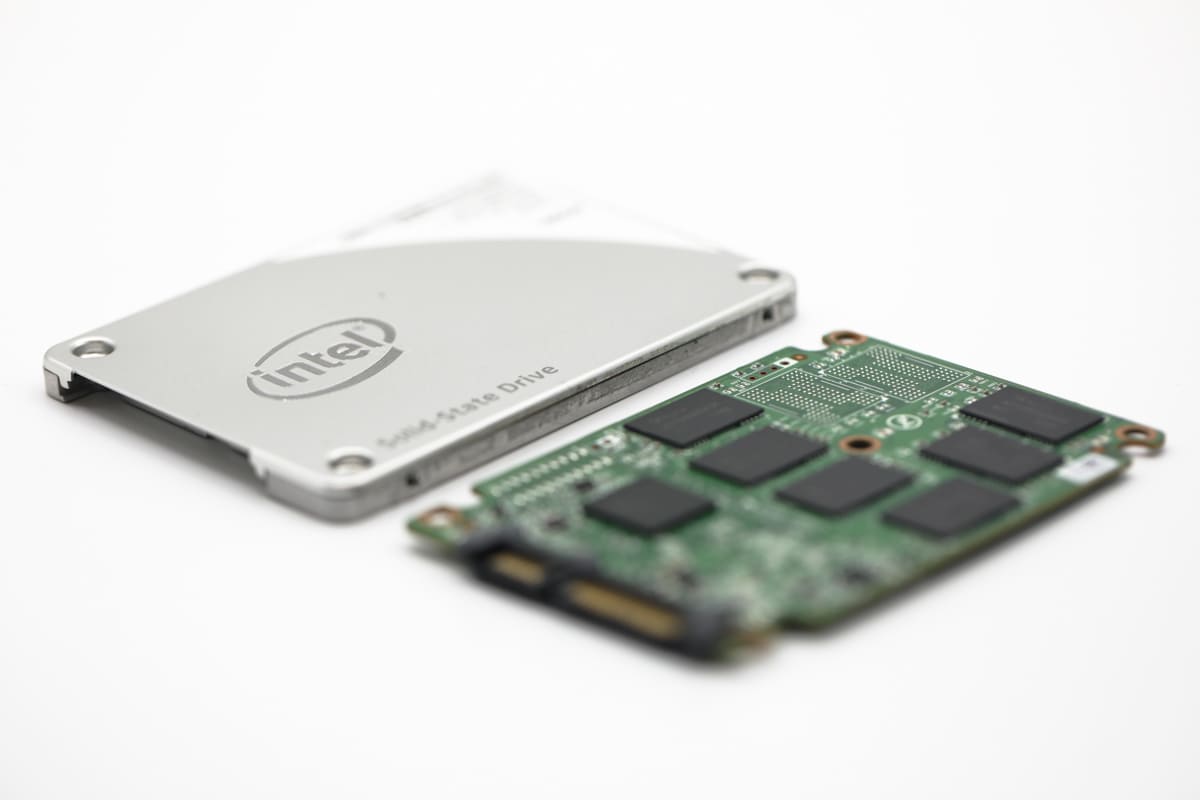
SSD Overheating: Causes, Risks, and Prevention
Explore the causes and risks associated with overheating, and discover prevention strategies to safeguard your SSD from potential damage.
